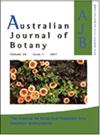利用澳大利亚植物标本馆收集的地衣和真菌来确定空气污染的时间变化并协助环境管理:为未来保存植物标本馆标本的挑战
IF 0.9
4区 生物学
Q4 PLANT SCIENCES
引用次数: 0
摘要
全球环境变化对分类学资源,特别是植物标本馆的需求日益增加,这些资源正以前所未有的方式被用作信息和生物资源材料。植物标本馆藏品的使用增加,给当前和持续的管理带来了挑战。目的通过澳大利亚的两项研究,证明植物标本馆在调查长期污染方面的重要作用;强调持续收集植物标本室的重要性,并就未来的收集管理提出建议。方法利用澳大利亚长期污染问题的案例研究来展示澳大利亚植物标本馆中经过验证的地衣和真菌分类群如何在确定长期空气污染源方面发挥关键作用。通过对植物标本中铅的化学和同位素分析,重建了澳大利亚东部150多年来大气铅沉积的模式。这一延长时间序列的样本有助于记录从自然背景浓度到铅在工业和机动车辆中引入和增加使用,再到最终停止在汽车燃料中使用铅的整个周期。除了表明对选定的分类群进行定期和长期取样的价值以及对新出现的环境问题的潜在应用之外,还强调了对植物标本室标本进行破坏性取样和分析的严格协议的重要性,特别是对含有少量材料的旧收藏品。澳大利亚和以前的研究都确定了未来维持和最大化利用有限的植物标本馆资源的一些问题和潜在挑战。在承认澳大拉西亚植物标本馆对其藏品取样研究有良好记录的政策和协议的同时,提出了六项建议,以供今后适当实施。对有限参考资料收集的当前管理战略进行了总结,对未来的建议包括:在更广泛的领域重复、持续收集;定期从具有详细实地数据的选定参考地点重新收集较大样本;在受控的环境条件下制备和储存标本,尽量减少化学害虫防治;用于研究的普遍分布的分类群的利用;仔细监督破坏性取样技术,以评估存在的化合物;并提供足够的资金来促进植物标本馆标本的数字化,以增加获取和优化馆藏的使用。本文章由计算机程序翻译,如有差异,请以英文原文为准。
The use of lichen and fungal collections in Australian herbaria to identify temporal changes in air pollution and assist environmental management: challenges to conserving herbarium specimens for the future
Context Global environmental modification is placing increased demand on taxonomic resources, especially herbarium collections, which are being utilised for information and as biological resource material in ways never previously envisaged. This increased use of herbarium collections presents current and on-going management challenges.Aims To demonstrate, with two Australian studies, the essential role of herbarium collections in investigating long-term pollution; to emphasise the importance of on-going collecting for herbaria and make recommendations for future collection management.Methods Australian case studies of a long-term pollution problem are used to show how verified lichen and fungal taxa in Australian herbaria were crucial in identifying sources of air pollution over time.Key results Chemical and isotopic analyses of lead in samples from curated herbarium collections were used to reconstruct patterns of atmospheric lead deposition over 150years in eastern Australia. This extended time series of samples facilitated documentation of the full cycle from natural background concentrations to the introduction and increasing usage of lead both in industry and motor vehicles, to the eventual discontinuation of its use in automotive fuel. In addition to demonstrating the value of regular, long-term sampling of selected taxa and potential applications to emerging environmental problems, the importance of strict protocols for destructive sampling and analysis of herbarium specimens, especially for older collections containing small quantities of material, has been highlighted.Conclusions Both the Australian and previous studies have identified a number of problems and potential challenges to maintaining and maximising the utilisation of finite herbarium resources for the future. While acknowledging that Australasian herbaria have well documented policies and protocols for studies that sample their collections, six recommendations are made, for future implementation as appropriate.Implications Current management strategies for finite reference collections are summarised and recommendations for the future include the following: repeated, ongoing collecting over broader areas; periodic re-collection of larger samples from select reference sites with detailed field data; preparation and storage of specimens under controlled environmental conditions, with minimal chemical pest control; utilisation of common widespread taxa for research; careful supervision of destructive sampling techniques to assess compounds present; and adequate funding to facilitate the digitisation of herbarium specimens to increase access and optimise use of curated collections.
求助全文
通过发布文献求助,成功后即可免费获取论文全文。
去求助
来源期刊

Australian Journal of Botany
生物-植物科学
CiteScore
2.30
自引率
18.20%
发文量
26
审稿时长
6-12 weeks
期刊介绍:
Australian Journal of Botany is an international journal for publication of original research in plant science. We seek papers of broad interest with relevance to Southern Hemisphere ecosystems. Our scope encompasses all approaches to understanding plant biology.
Australian Journal of Botany is published with the endorsement of the Commonwealth Scientific and Industrial Research Organisation (CSIRO) and the Australian Academy of Science.
 求助内容:
求助内容: 应助结果提醒方式:
应助结果提醒方式:


